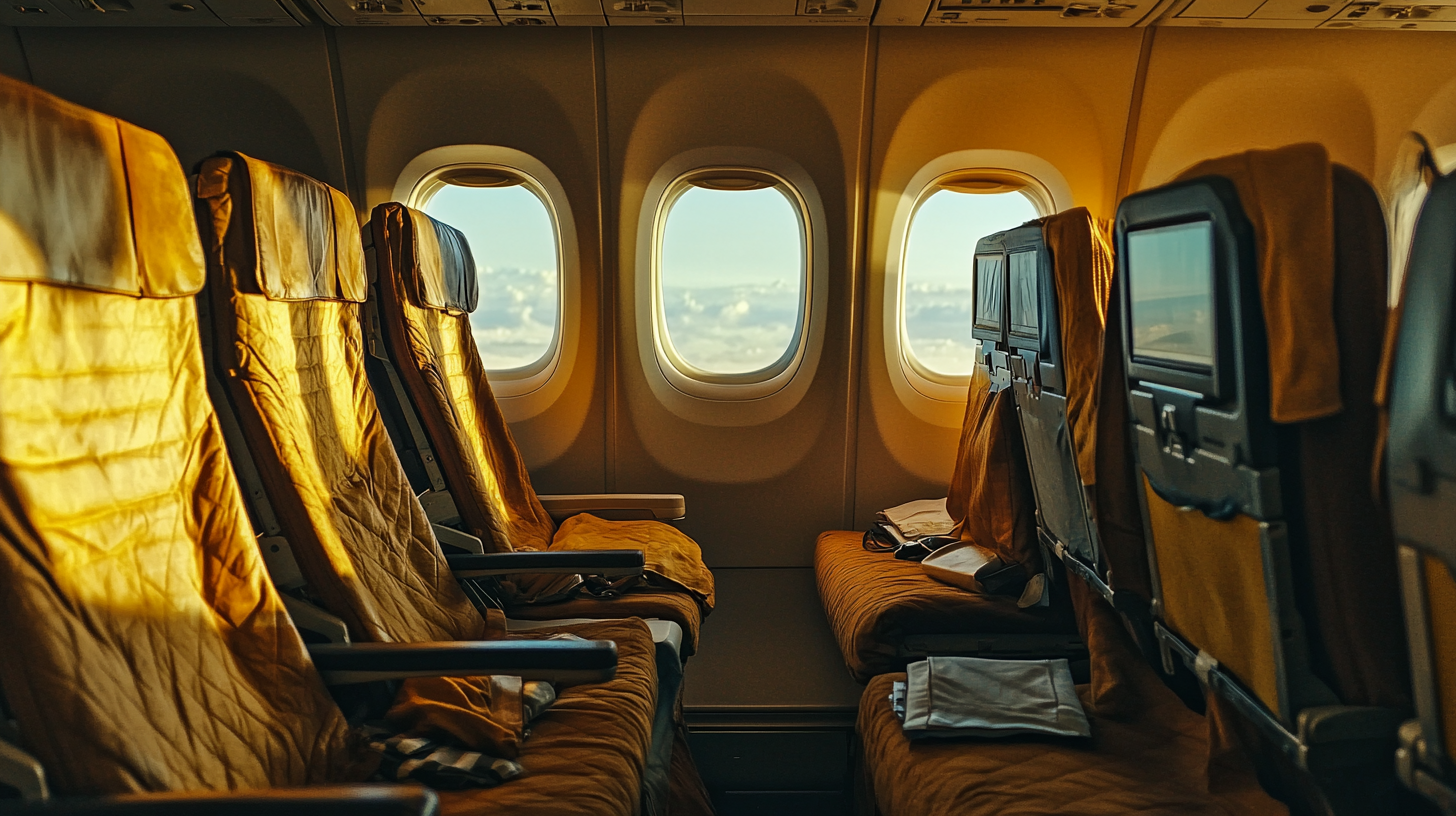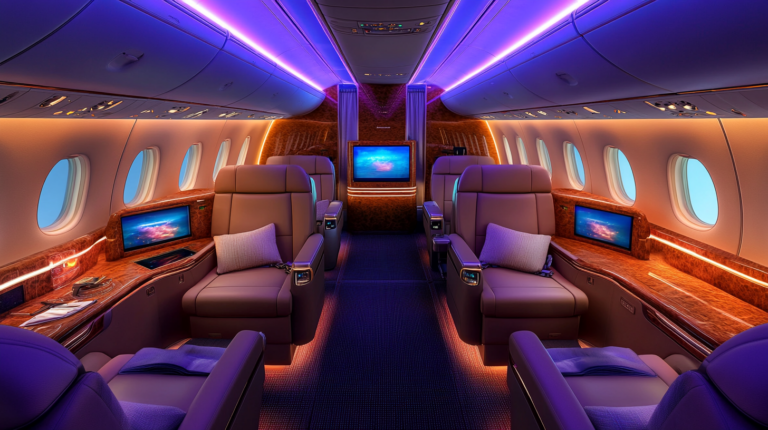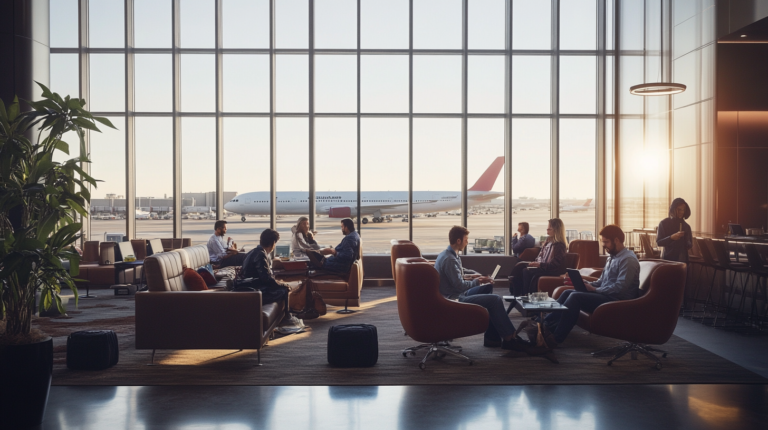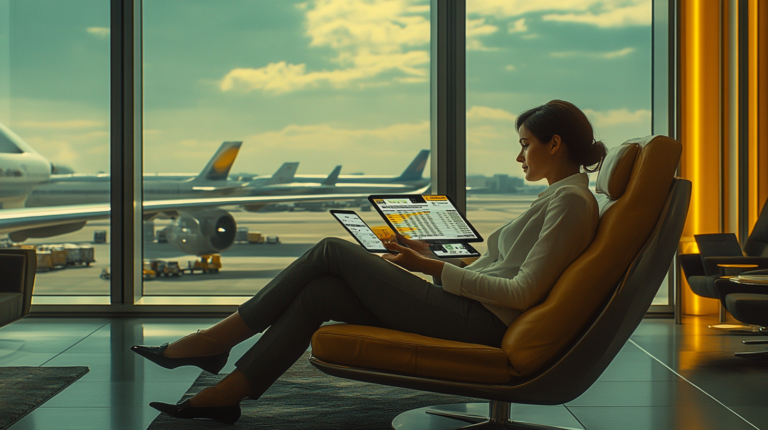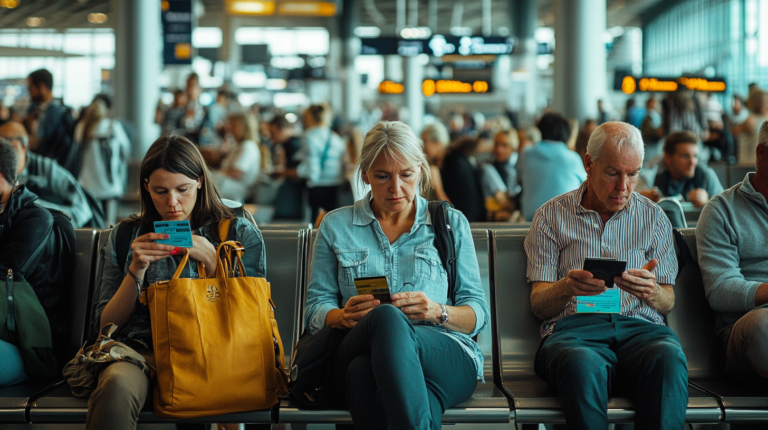Avoiding the 7 Worst Plane Seats
I’ve learned over the years that seat selection can truly make or break a flight—especially for frequent flyers like me who navigate jam-packed cabins, unpredictable layovers, and the occasional mid-air turbulence. It’s no wonder recent travel trends report a 297% jump in online searches for “best plane seats.” After all, who wouldn’t want a comfortable spot at 35,000 feet?
From top tips shared by travel experts like David Duff to real-life seat tests conducted by Benji Stawski and Stella Shon, I’ve discovered that where you sit can transform a flight into a restful retreat or a prolonged battle with cramped legroom. Below, I’ll walk you through some of the worst seat locations to steer clear of and offer practical advice for finding spots that better fit your style—whether you’re chasing a power nap or juggling in-flight work tasks.
The Middle Seat
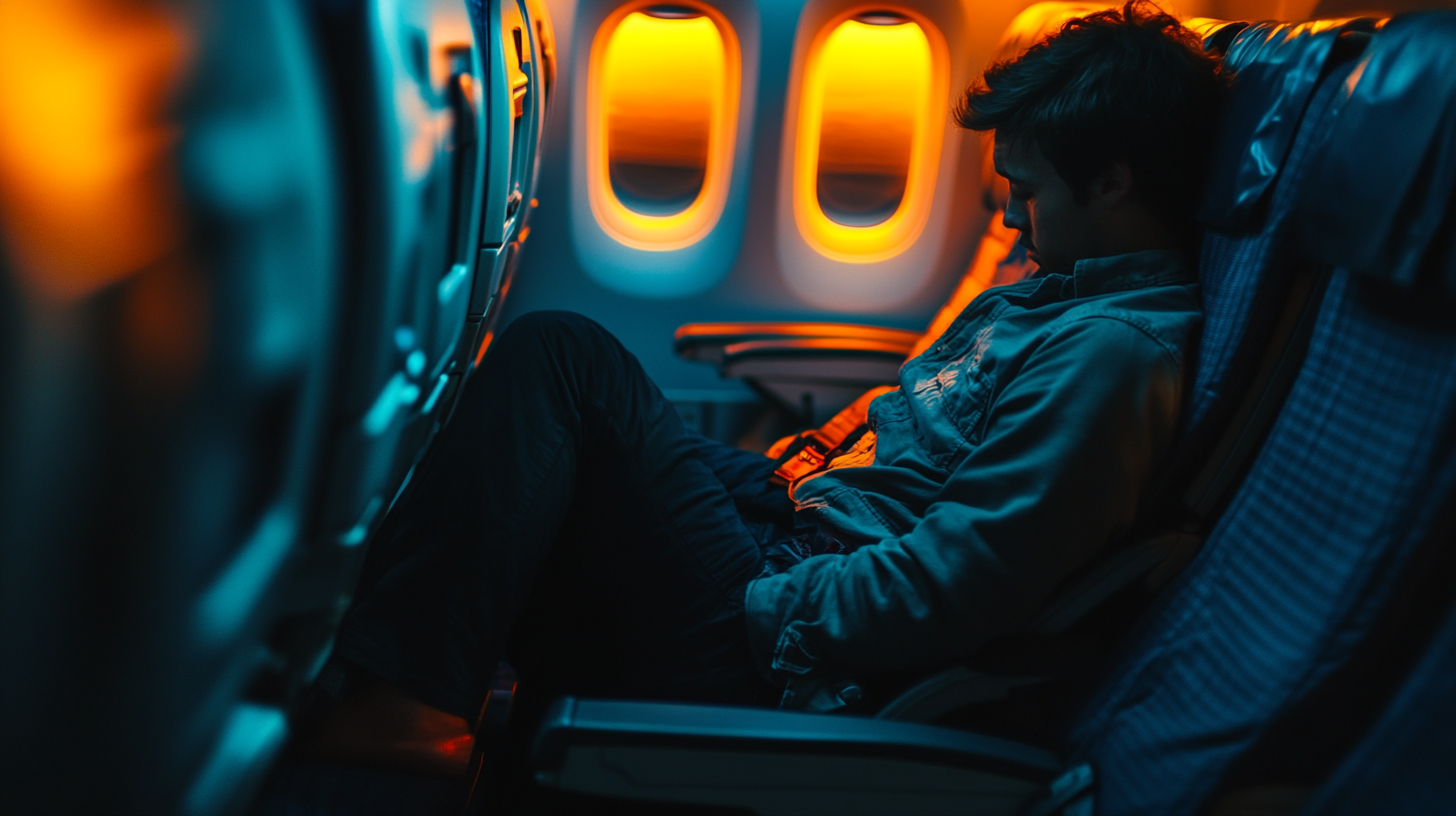
In my own experience, the middle seat is rarely anyone’s first choice. It’s where elbows clash and personal space is at an all-time premium, leaving little room for comfort or productivity. While you might find yourself next to pleasant seatmates, it’s still an uphill battle to secure enough room for your carry-on or to catch a decent nap.
Data from a 2024 passenger satisfaction survey indicates that nearly 65% of travelers actively avoid booking a middle seat. Many of them would rather pay extra fees for aisle or window seats if it means they can sidestep the dreaded middle scenario. I’ve even noticed some frequent flyers rely on detailed cabin maps from online booking sites like Orbitz or Travelocity to pinpoint the best rows well in advance.
One small trick I’ve picked up is to set up flight alerts as soon as you know your travel dates. Booking early can significantly improve your chances of grabbing an aisle or window spot. Plus, if you’re flying solo, some airlines use an AI-based seat allocation system that often leaves middle seats vacant until the cabin starts filling up, so acting fast might save you from the squeeze.
The Back Row (Prone to Turbulence)
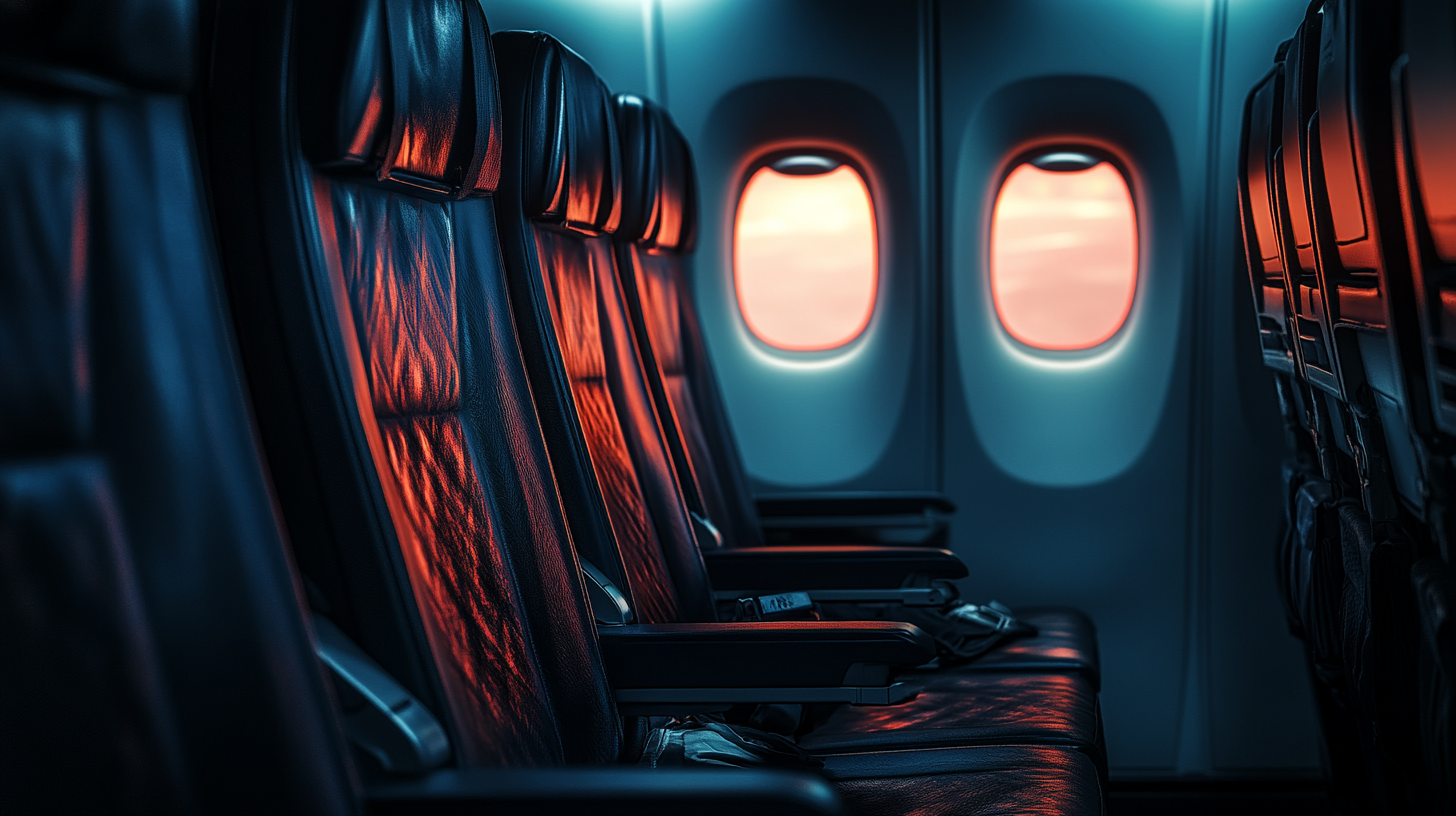
According to travel expert David Duff, the back row is a minefield of discomfort. I’ve learned firsthand that seats in this area tend to have limited recline—if any at all—and you’re often closer to the engine hum and galley noise. Factor in the turbulence that sometimes feels extra intense near the tail, and you’ve got a recipe for an exhausting journey.
During a work trip last year, I found myself stuck in the final row of a long-haul flight. Not only was deplaning a drawn-out process, but the constant jostle in the tail end made it nearly impossible to work on my laptop. Benji Stawski and Stella Shon have also documented similar grievances, pointing out that minimal seat pitch and reduced storage space can really cramp your style, especially if you’re traveling with extra gadgets or a laptop bag.
Experts often suggest selecting a seat closer to the wings if you’re prone to motion sickness, as the ride tends to be more stable there. Personally, I always find it worthwhile to check seat reviews through sites like SeatGuru or read up on specific aircraft. Some carriers still position bathrooms or crew rest areas in close proximity to the last row, adding extra noise and foot traffic. Staying aware of these layout quirks can keep you from ending up in the most turbulent section.
Near the Lavatories
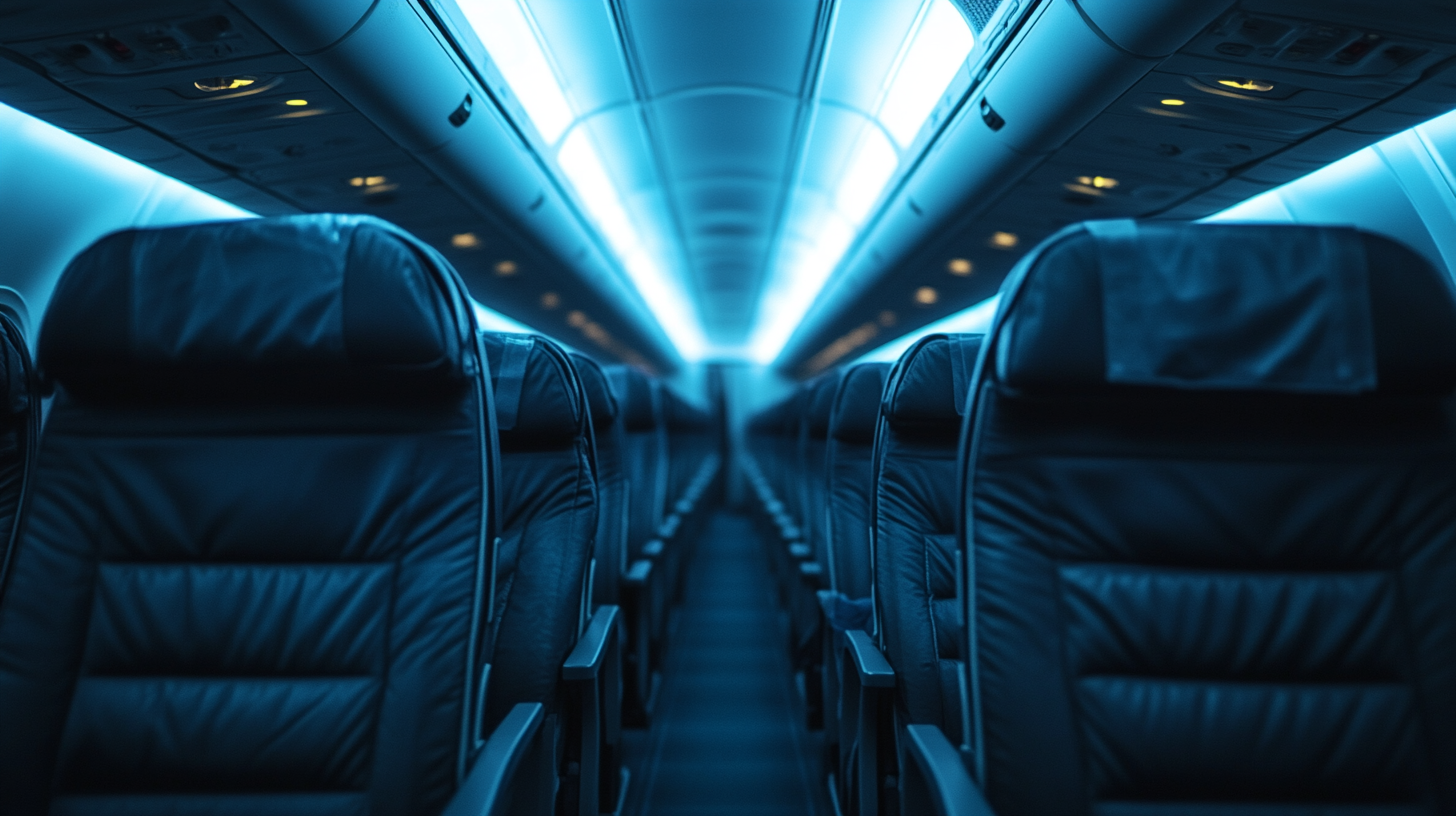
At first glance, a seat near the lavatory might seem convenient: quick bathroom access can be tempting. But in my experience, the constant foot traffic, door-slamming, and occasional odors overshadow any supposed perks. If you’re eyeing that spot because it’s the only one left, just remember you’re likely trading comfort for convenience.
A recent study by the Aviation Hospitality Association found that passengers seated within three rows of a lavatory were 40% more likely to report noise-related complaints. Throughout the flight, you’ll hear people lining up, washing up, and chatting while they wait their turn. This can become particularly disruptive on overnight flights, where every bit of peace and quiet counts.
On one of my red-eye journeys, I made the mistake of picking a seat directly across from the bathroom. The hallway felt like a revolving door, with travelers stepping on my feet or bumping into my seat as they waited. Ever since, I’ve made it a point to check the seat map carefully before I confirm my ticket. I’d rather walk a few extra steps when nature calls than endure that distracting shuffle the entire flight.
The Bulkhead
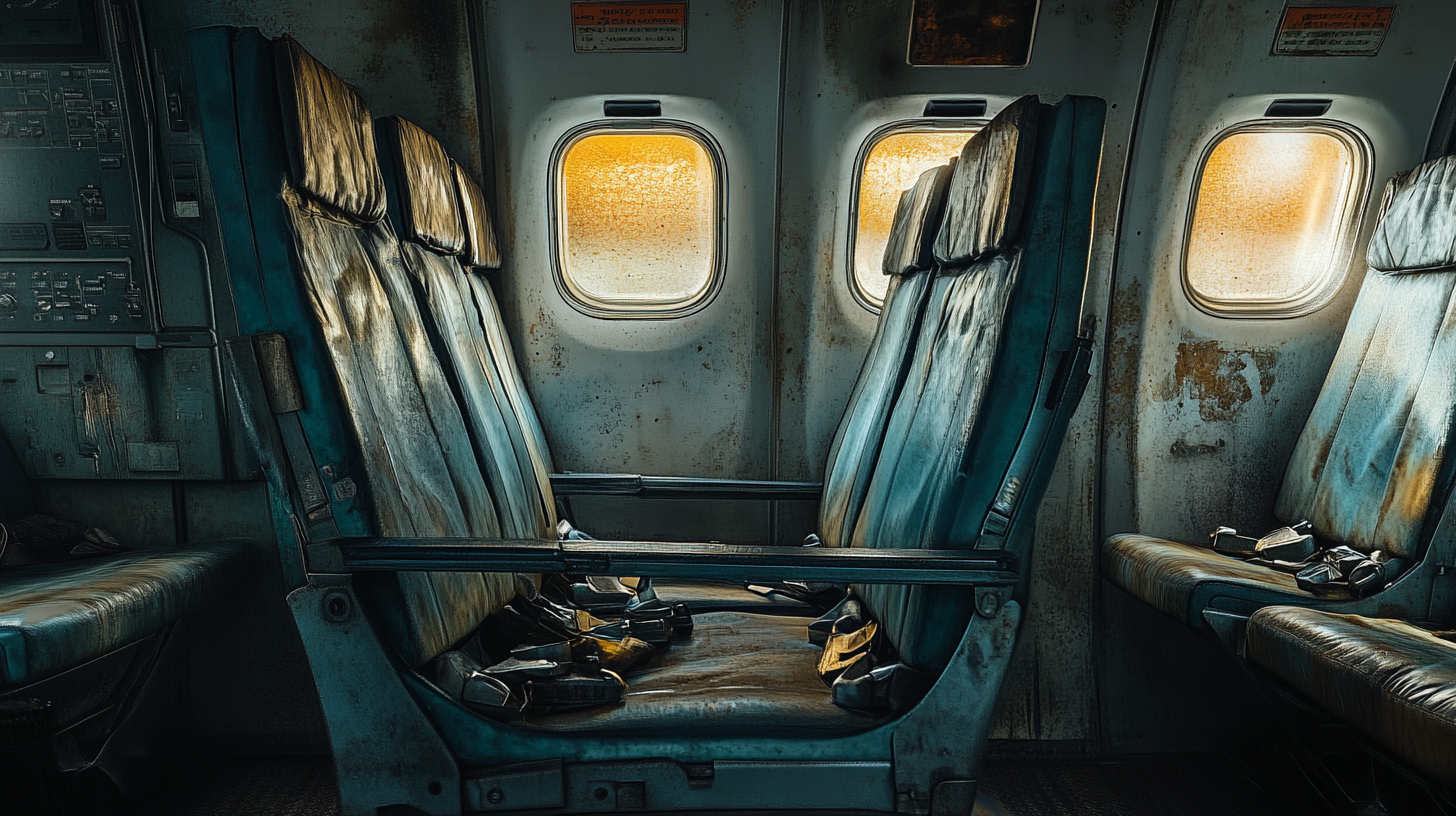
Bulkhead seats are often the first seats people notice when boarding, thanks to the extra legroom at first glance. I’ve been tempted by them more than once, especially on longer trips. However, there’s usually no under-seat storage, forcing you to store every little item in the overhead bin—a slight nuisance if you need to grab something mid-flight.
Industry data from 2023 suggests that bulkhead seats can actually be narrower in some aircraft configurations, because airlines add tray tables or entertainment screens onto the bulkhead wall. I’ve personally dealt with this on a transatlantic flight, and it was a rude awakening to realize that not all bulkhead rows are created equal. Some even have limited recline to accommodate emergency equipment or infant bassinets.
Before committing to a bulkhead seat, I recommend researching your specific aircraft model. Passengers sometimes assume more legroom automatically equals more comfort, which isn’t always the case. Reputable sites like SeatGuru can provide seat width and pitch details, helping you avoid any unwelcome surprises once you’re in the air.
Next to the Galley

Seats adjacent to the galley can feel like sitting in the middle of a bustling café. Flight attendants are clinking glasses, preparing meals, and coordinating service throughout the flight, particularly on long international routes or busy holiday schedules. It’s an impressive operation to watch, but not so relaxing when you’re trying to sleep or watch a movie.
In my own travels, I’ve noticed that these seats come with a higher risk of being jostled by food carts. A colleague of mine once spilled his drink because the cart bumped his armrest while he was taking a sip. According to cabin crew surveys, the galley can be the noisiest spot on a plane, rivaled only by seats next to the lavatories.
If you’re someone who values a quieter environment or simply plans to catch up on some rest, it’s best to skip this section entirely. Many airline booking platforms let you filter for seats away from the galley, and I highly recommend taking advantage of that feature. A little extra scrolling can mean the difference between a peaceful flight and an endless soundtrack of clattering dishes.
The Exit Row
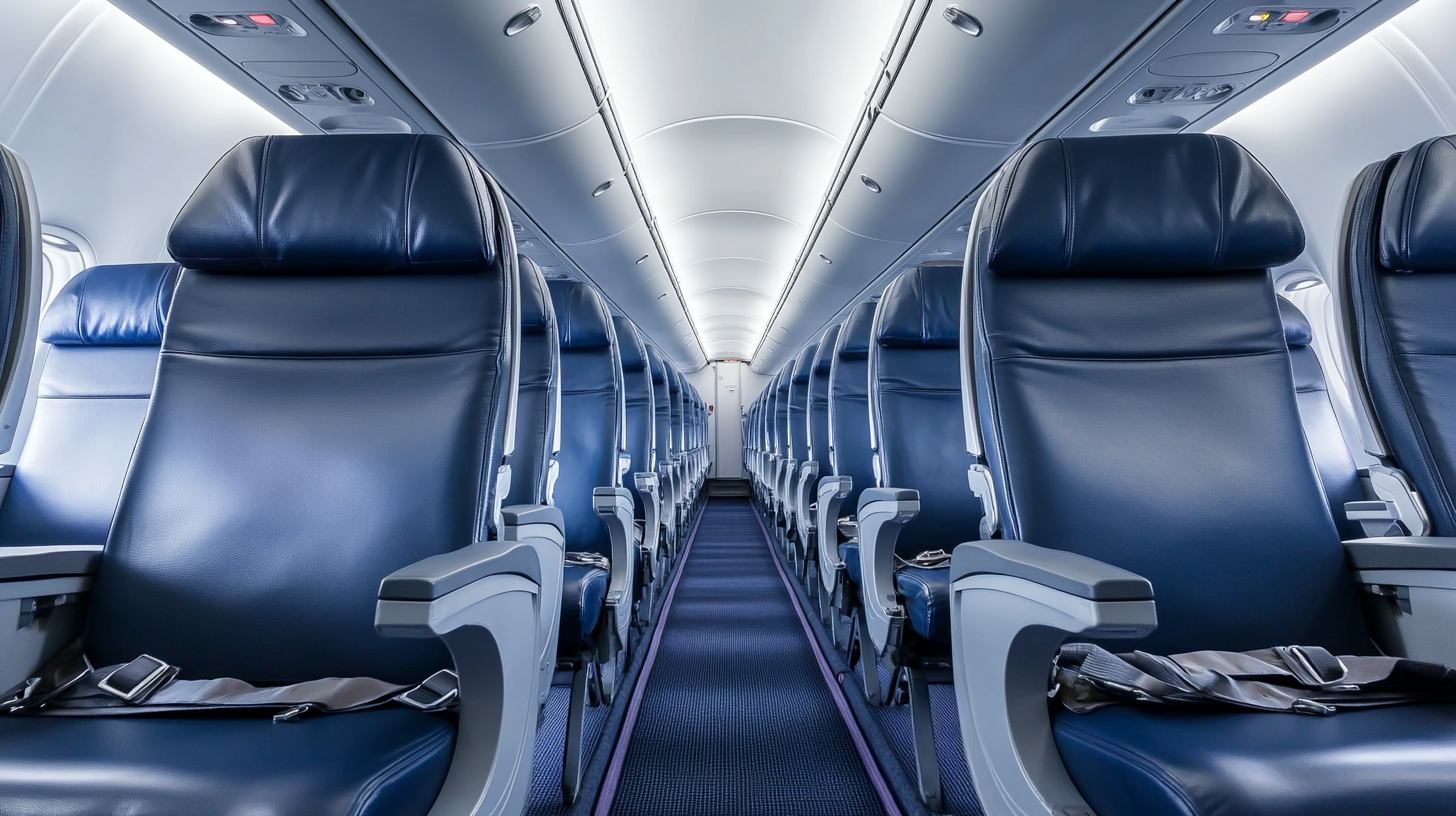
Exit row seats often advertise extra legroom, making them a go-to choice for taller passengers. I’ve taken advantage of these seats before, and while the bulkhead in front is nonexistent, not all exit rows recline. On a red-eye flight, that missing recline can make it tough to get comfortable, especially if you’re counting on some shut-eye.
In addition, some people report that exit rows can be drafty or colder due to their proximity to the aircraft door seals. I’ve felt that chill on more than one occasion, prompting me to pack an extra layer. If you’re someone who gets cold easily, that’s definitely something to keep in mind before snatching up that seat.
For safety reasons, airlines also require passengers in exit rows to be physically capable of assisting in an emergency, which includes lifting the door or helping others evacuate. A recent policy update at some carriers states that flight attendants have the right to reassign your seat if you’re not up to the task. I always make sure to confirm that possibility during check-in, just in case plans change or if I’m traveling with someone who might not meet those requirements.
Over the Wing
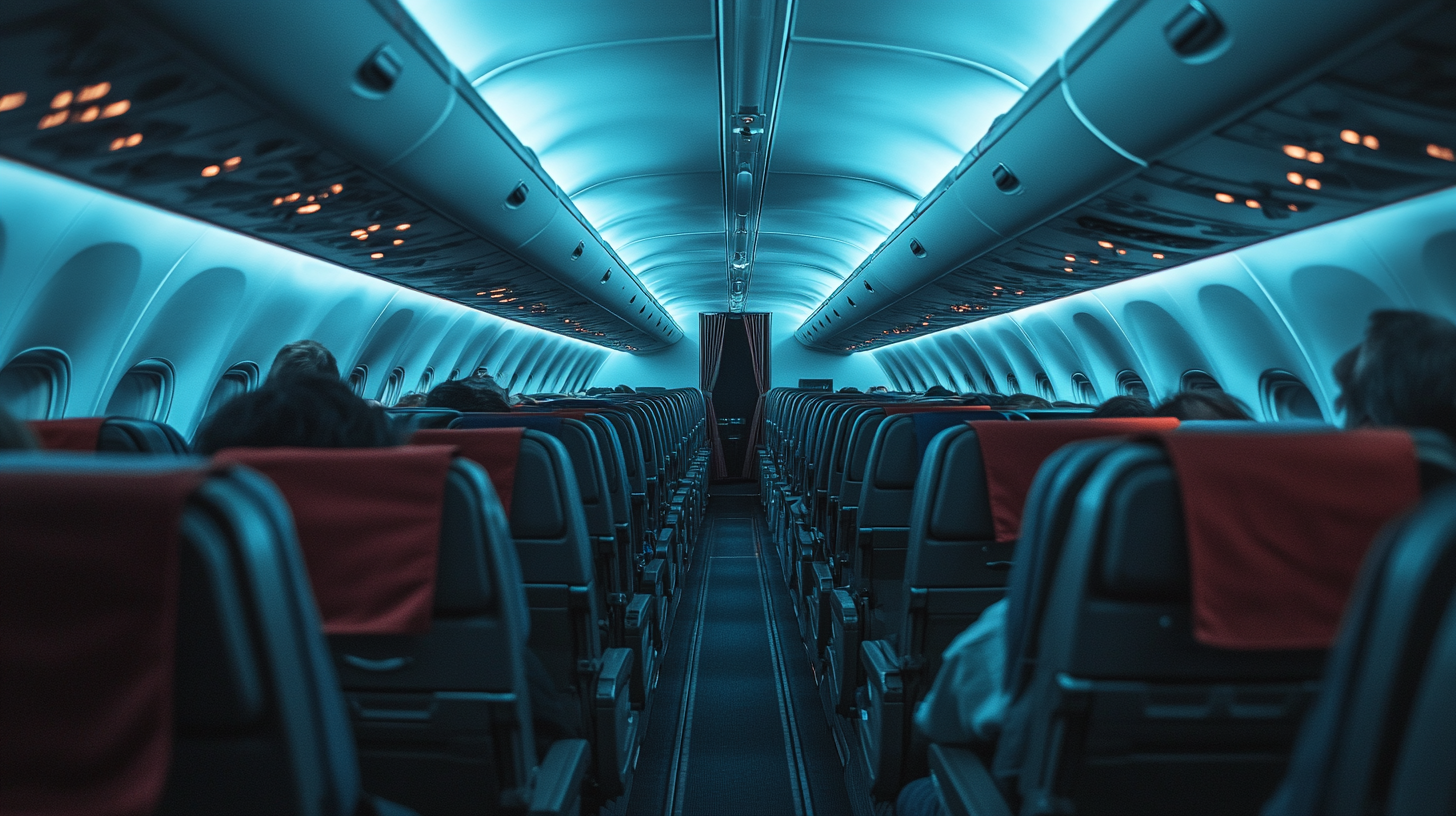
Many nervous flyers prefer seats over the wing because it’s generally considered the most stable spot in the cabin. From my perspective, if you’re worried about turbulence, sitting over the wing drastically cuts down on that stomach-lurching bounce. On the flipside, if you were hoping for sweeping views of mountains or cityscapes, you might be disappointed by the obstructed vista.
I recall one flight where I chose a window seat right over the wing to get some work done. The ride was incredibly smooth, but I had to settle for the sight of a massive metal wing instead of cloud-shrouded scenery. If you’re someone who loves snapping photos out the window, this location might dampen your enthusiasm.
Engine noise can also be more pronounced in this section, depending on the aircraft model and engine placement. A 2025 industry report from AeroTech Insights indicates that newer planes are designed to minimize cabin noise, but older fleets can still be pretty loud near the wings. If noise is a concern, it might be worth investing in noise-canceling headphones or simply choosing a seat further forward.
The Bottom Line
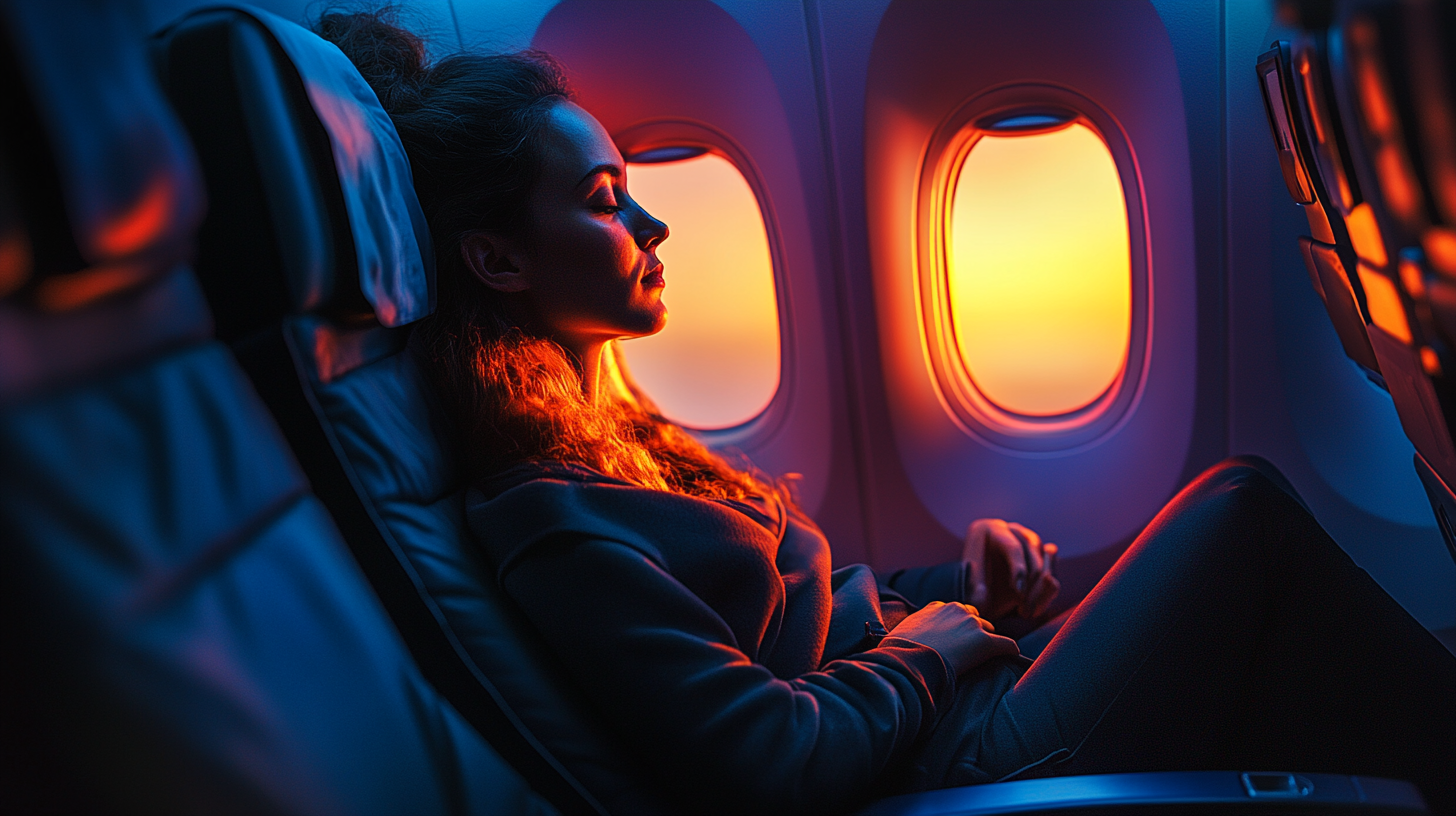
Navigating seat selection has become more complex in recent years, thanks to budget airlines charging extra for advanced picks and full-service carriers introducing multiple cabin tiers. In my view, whether you’re flying for business or leisure, understanding the nuances of each seat location can give you a leg up—literally and figuratively. Smaller details, like overhead bin space or proximity to a power outlet, can also affect your overall experience.
Frequent flyers like Christine Sarkis advocate for booking as far in advance as possible and using reputable seat-selection websites to review cabin layouts. I’ve followed her lead on countless trips, and it has paid off in the form of comfortable seats and stress-free boardings. It’s also worth reading passenger reviews for specific rows on your exact flight and airplane type.
Ultimately, seat preference is personal: some folks want a quick exit upon landing, while others prioritize legroom or a quiet corner for sleep. By doing your homework, you can dramatically improve your in-flight comfort. When the holidays roll around and planes fill up fast, having a strategy—like setting up fare alerts or paying a bit extra for prime seating—can make all the difference between a cramped, inconvenient flight and an enjoyable journey.
Final Thoughts

After countless flights, I’ve come to realize that seat selection isn’t merely about legroom—it’s also about peace of mind, convenience, and the overall vibe of your journey. The aisles, windows, bulkheads, and exit rows each have their pros and cons, and no universal “perfect seat” exists for everyone. Research and personal preference go hand in hand.
By weighing factors like noise level, turbulence, proximity to galleys or lavatories, and whether you prefer an open space or the window view, you can vastly improve your flying experience. I always recommend exploring seat maps, checking airline blogs, and reading firsthand reviews before locking in your final decision. It may take a little extra effort up front, but the payoff in comfort is undeniable.
Barry B.’s Take
I’ll admit that I used to pick my seat based solely on the view. Over time, though, I’ve learned that comfort and functionality can matter more than a snapshot from the window. Whether I’m traveling for work or heading off on a personal adventure, knowing the seat layout has given me the freedom to make each flight my own.
At the end of the day, the little details—like a quiet space to read, a convenient aisle seat for stretching out, or the stability of sitting over the wing—can transform the flight from a mere means of transport into a more enjoyable part of the journey. If there’s one thing I’ve discovered in all my years of flying, it’s that the right seat can turn a cramped trip into a memorable escapade.
Stay informed and stay entertained with more tips at milesBUZZ.

